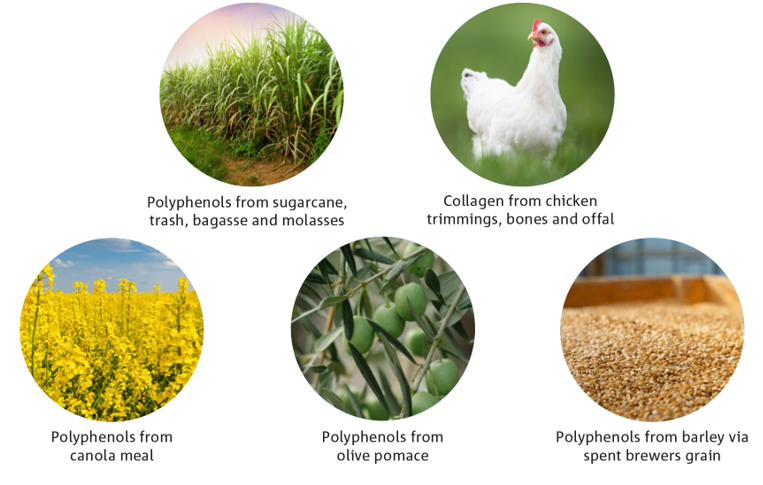BEYOND NUTRIENTS: How Olive Oil Unlocks the Power of Nature’s Bioactives
This article first appeared in Olive Growers Victoria’s newsletter.
By: Dr. Paul H. Mason, Research Fellow/Sessional Lecturer, School of Natural Sciences/School of Social Sciences, Macquarie University, NSW
If you grow olives, you already know they’re special. The deep, peppery bite of fresh pressed olive oil isn’t just about flavour—it’s a sign of polyphenol richness, the compounds that make extra virgin olive oil (EVOO) one of the healthiest fats on the planet. But here’s what many don’t realise: health benefits don’t just come from what’s inside the bottle. They depend on what happens next—how olive oil interacts with other foods to unlock their full nutritional potential.
Bioactives: More Than the Sum of Their Parts
Most of us think about nutrition in terms of individual nutrients—vitamin C in oranges, calcium in milk, iron in spinach. But food is more than just a collection of isolated nutrients. The real magic happens when different foods interact, enhancing each other’s bioactive potential.
Bioactive compounds are naturally occurring molecules in fresh produce that provide health benefits beyond basic nutrition. Take carotenoids, for example—the compounds that give carrots, tomatoes, and capsicums their vibrant colours. These antioxidants support eye health and help reduce inflammation. But here’s the twist: carotenoids are fat-soluble, meaning your body absorbs them better when paired with healthy fats like those in olive oil. That’s why a drizzle of EVOO over roasted carrots, a tomato salad, or grilled capsicum isn’t just delicious—it actually makes the bioactives more bioavailable, amplifying their health benefits.
The Science of Smart Pairings
Some of the most powerful bioactives aren’t fully available to our bodies unless they’re properly prepared. Glucosinolates, a lesser-known class of bioactive compounds found in cruciferous vegetables like broccoli and Brussels sprouts, have been linked to anti-cancer properties. However, light cooking and the presence of fat helps to transform them into their most beneficial forms.
Bioactive-rich recipes don’t have to be elaborate to be powerful. The right ingredients, prepared the right way, can unlock a wealth of health benefits—without requiring specialised equipment or hours in the kitchen. Here are three simple but effective ways to make the most of nature’s bioactives:
Roasted Broccoli or Brussels Sprouts with Olive Oil and Lemon: A drizzle of extra virgin olive oil and a squeeze of lemon can do more than enhance flavour— this combination helps maximise the conversion of glucosinolates into potent, health-boosting compounds. Light roasting brings out the natural sweetness of these vegetables while preserving their powerful bioactive potential.
Sautéed Kale or Cabbage with Garlic and Olive Oil: Dark leafy greens are packed with bioactives, but their full potential is only realised when paired with healthy fats. Sautéing kale or cabbage in olive oil with a touch of garlic not only enhances their nutrient absorption but also adds depth and warmth to their earthy flavours.
Cauliflower with Turmeric and Olive Oil: This golden-hued dish is a bioactive powerhouse. Olive oil improves the absorption of cauliflower’s natural compounds, while also making turmeric’s bioactive compound, curcumin, more bioavailable. Since curcumin is fat-soluble, pairing it with extra virgin olive oil ensures you get the most out of its anti-inflammatory benefits.
With just a few simple tweaks in the kitchen, these everyday ingredients can work together in ways that go far beyond basic nutrition. By combining the right foods, you’re not just making a meal—you’re creating a powerful synergy of bioactives that support long-term health.
How You Store and Prepare Food Matters
Even the healthiest foods can lose their bioactive punch if they’re not stored or cooked properly. The way we handle fresh produce and olive oil can mean the difference between unlocking their full potential or letting those powerful compounds go to waste.
Take tomatoes, for instance. Many people instinctively stash them in the fridge, but this dulls their flavour and slows the natural ripening process that enhances their bioactive content. Left at room temperature, tomatoes continue to develop lycopene, a potent antioxidant linked to heart health and protection against prostate cancer. Even better? Cooking tomatoes with olive oil dramatically boosts lycopene absorption, turning a simple tomato sauce into a bioactive powerhouse.
Leafy greens like spinach and kale are packed with vitamin C and polyphenols, but their delicate nutrients begin to degrade the moment they’re harvested. Storing them in the crisper helps retain their freshness, but when it comes to getting the most out of them, a quick sauté with olive oil does wonders. The healthy fats in olive oil enhance the absorption of fat-soluble vitamins and bioactives, ensuring your greens work harder for your health.
And then there’s olive oil itself—the liquid gold of the Mediterranean diet. Exposure to heat, light, and air can cause oxidation, degrading the precious polyphenols that give olive oil its anti-inflammatory and antioxidant properties. Storing it in a cool, dark place—away from the stovetop—helps preserve its potency for longer.
When it comes to cooking, think of bioactives like a symphony—some are delicate high notes, easily lost with too much heat, while others are deep, rich tones that become more vibrant when given the right conditions. Overcooking can destroy fragile compounds, so opt for gentle methods like steaming, roasting, or light sautéing to keep bioactives intact.
Surprisingly, not all bioactives need protection—some actually thrive with a little exposure. Mushrooms, for example, can supercharge their vitamin D content if left in direct sunlight for just an hour before cooking, increasing their levels nearly eightfold. It’s a reminder that the way we handle food can transform its health benefits in unexpected ways.
By understanding how storage, preparation, and cooking methods influence bioactives, we can make small, simple changes that have a profound impact on our health. It’s not just about eating fresh—it’s about eating smart.
The Art of Eating Well
Healthy eating isn’t just about what’s on your plate—it’s about how you combine ingredients to get the most out of them. The way we prepare, pair, and consume fresh produce and olive oil can amplify or mute their health benefits. Food pairing matters. Cooking techniques matter. Storage matters.
A collaboration between Hort Innovation and a multidisciplinary research team at Macquarie University and the ARC Training Centre for Facilitated Advancement of Australia’s Bioactive (FAAB) is helping to bridge the gap between scientific knowledge about bioactives and everyday eating habits. By translating cutting-edge research into accessible dietary and health information, this project is empowering growers, retailers, and consumers to make smarter choices about the food they produce, sell, and eat.
If you’d like to learn more, please contact: [email protected]
Editor’s Note:
CSIRO has undertaken a data-led approach to quantify high-value bioactives within Australian agrifood by-products to supply the complementary medicines industry.
The report identified 30 preliminary opportunities by examining supply value, technical maturity and level of Australian investment. From these, five prospective opportunities were identified that could unlock untapped potential from areas of currently low Australian investment.

